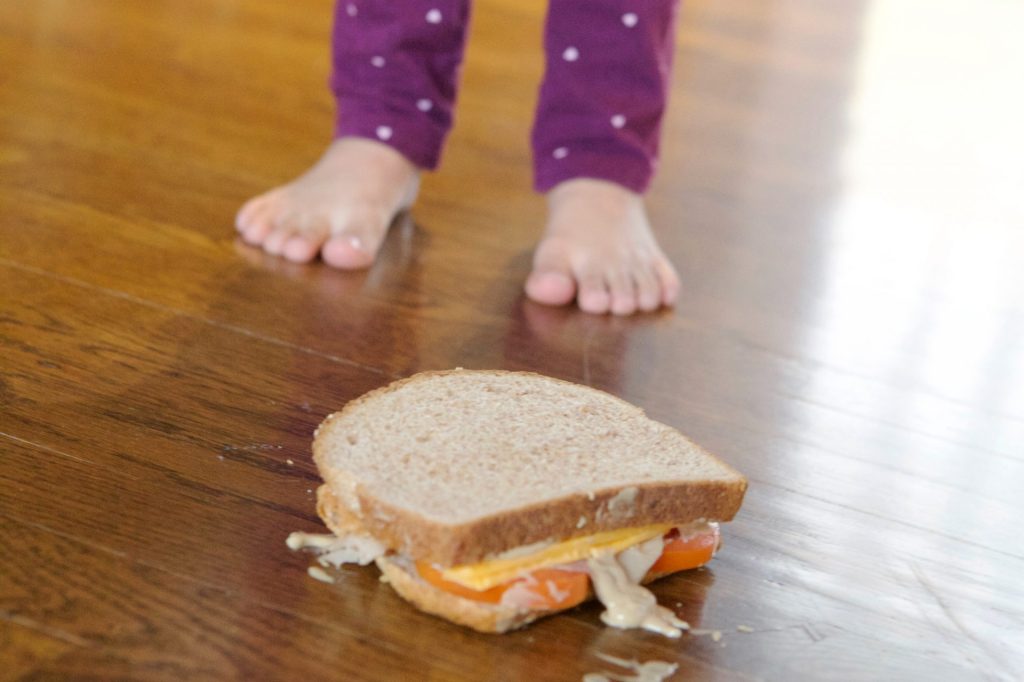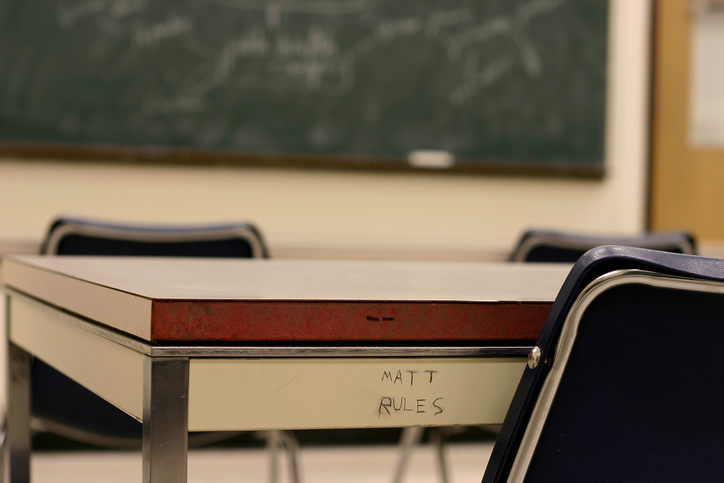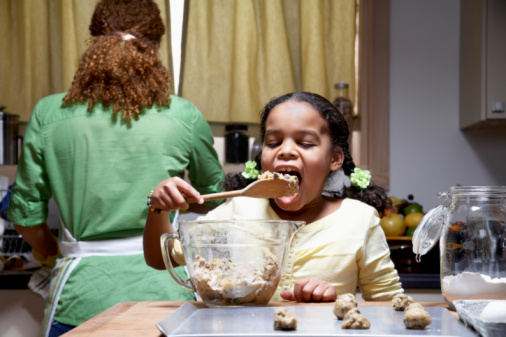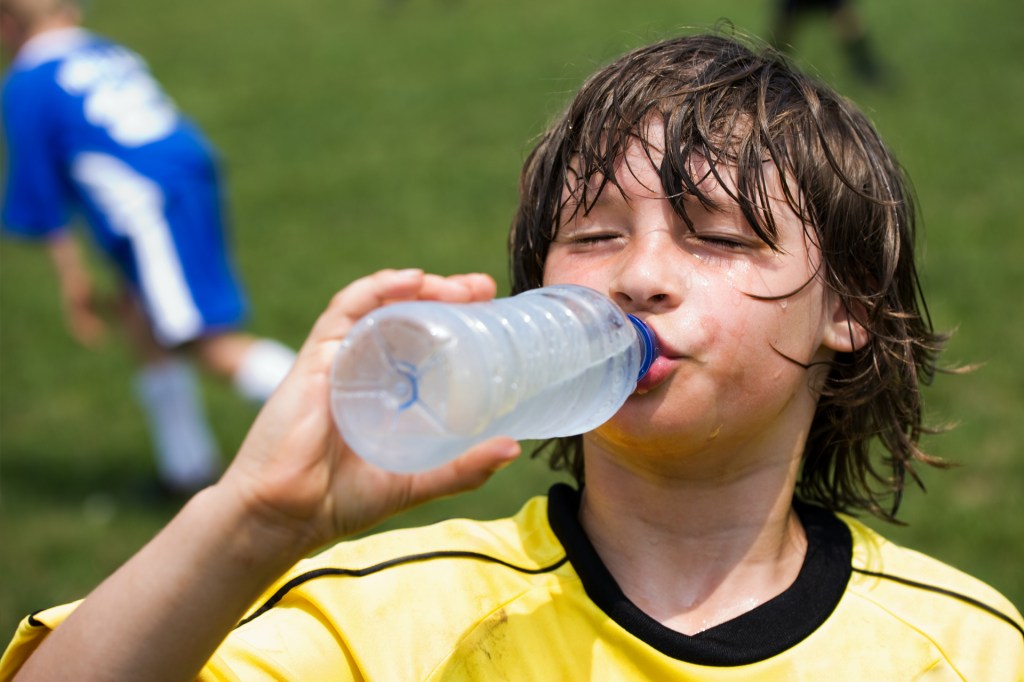Okay to Eat?

At least 50% of U.S. adults have eaten food off of the floor. That’s according to a 2017 Harris Poll. It was conducted
conduct
 SMPHOTO/GETTY IMAGES
to lead, undertake, or manage something
(verb)
Our teacher conducted an investigation to find out who vandalized the desk.
on behalf of the food-delivery service Uber Eats. Many people rely on something called the five-second rule. The rule claims that fallen food is safe to eat if it has been on the floor for five seconds or less. Can people really count on the five-second rule to save a dropped sandwich? Or is it best to toss the rule—and the sandwich?
SMPHOTO/GETTY IMAGES
to lead, undertake, or manage something
(verb)
Our teacher conducted an investigation to find out who vandalized the desk.
on behalf of the food-delivery service Uber Eats. Many people rely on something called the five-second rule. The rule claims that fallen food is safe to eat if it has been on the floor for five seconds or less. Can people really count on the five-second rule to save a dropped sandwich? Or is it best to toss the rule—and the sandwich?
FOOD SCIENCE
Donald Schaffner is a professor of food science. He teaches at Rutgers University, in New Jersey. His research has shown that the five-second rule is not always reliable. In some instances, he says, bacteria
bacteria
 JGI—JAMIE GRILL/GETTY IMAGES
very small organisms that can cause disease
(noun)
Washing your hands for 20 seconds with soap and water will kill most bacteria.
can transfer to food in less than a second. “Bacteria can contaminate
contaminate
JGI—JAMIE GRILL/GETTY IMAGES
very small organisms that can cause disease
(noun)
Washing your hands for 20 seconds with soap and water will kill most bacteria.
can transfer to food in less than a second. “Bacteria can contaminate
contaminate
 YAGI STUDIO/GETTY IMAGES
to make something dangerous or dirty by adding something harmful to it
(verb)
You must wash your hands before you start cooking so you don't contaminate the food.
instantaneously,” he writes in his 2016 report. For example, a sticky, wet food—like a licked candy or a slice of watermelon—will absorb bacteria as soon as it hits the floor. Even if the food is picked up quickly, it should not be eaten. “Bacteria don’t have legs, they move with the moisture, and the wetter the food, the higher the risk of transfer,” Schaffner says.
YAGI STUDIO/GETTY IMAGES
to make something dangerous or dirty by adding something harmful to it
(verb)
You must wash your hands before you start cooking so you don't contaminate the food.
instantaneously,” he writes in his 2016 report. For example, a sticky, wet food—like a licked candy or a slice of watermelon—will absorb bacteria as soon as it hits the floor. Even if the food is picked up quickly, it should not be eaten. “Bacteria don’t have legs, they move with the moisture, and the wetter the food, the higher the risk of transfer,” Schaffner says.
Anthony Hilton studied the five-second rule too. He is a professor at Aston University’s School of Life and Health Sciences, in Birmingham, England. Hilton discovered that when a dry food—like a cookie or cracker—falls on the floor, it collects fewer bacteria than a wet food. Hilton also found that carpeted floors transfer fewer bacteria than wood or tile floors. “This is because the top of a carpet keeps food away from bacteria that lie closer to the ground,” Hilton told TFK. Still, Hilton advises caution. “Food that is on the floor is never entirely risk-free to eat,” he says. “But if you drop a dry food in your house, it’s usually okay if you pick it up very quickly. Most clean homes don’t have bad bacteria.”
THINK TWICE
What if you drop food on the kitchen counter? Is it okay to pop that morsel in your mouth? Dr. Steven Dowshen is a pediatrician. He is affiliated with Nemours/Alfred I. duPont Hospital for Children, in Wilmington, Delaware. He says messy eaters should think twice before following the five-second rule. “Floors are not the only surfaces that can contaminate your food,” Dowshen told TFK. “Kitchen counters can contain more-harmful bacteria. This is because raw foods, which may have bacteria called salmonella
salmonella
 SEAN JUSTICE/GETTY IMAGES
a kind of bacteria that is sometimes found in food and can make people sick
(noun)
It is not safe to eat cookie dough that is made with raw eggs, because they could contain salmonella.
, are sometimes cut on kitchen counters. If people eat food off a surface that has salmonella, they can get very sick.”
SEAN JUSTICE/GETTY IMAGES
a kind of bacteria that is sometimes found in food and can make people sick
(noun)
It is not safe to eat cookie dough that is made with raw eggs, because they could contain salmonella.
, are sometimes cut on kitchen counters. If people eat food off a surface that has salmonella, they can get very sick.”
With the five-second rule, much depends on the type of food and the surface on which it falls. So it might be best to rely on this rule instead: When in doubt, throw it out.












